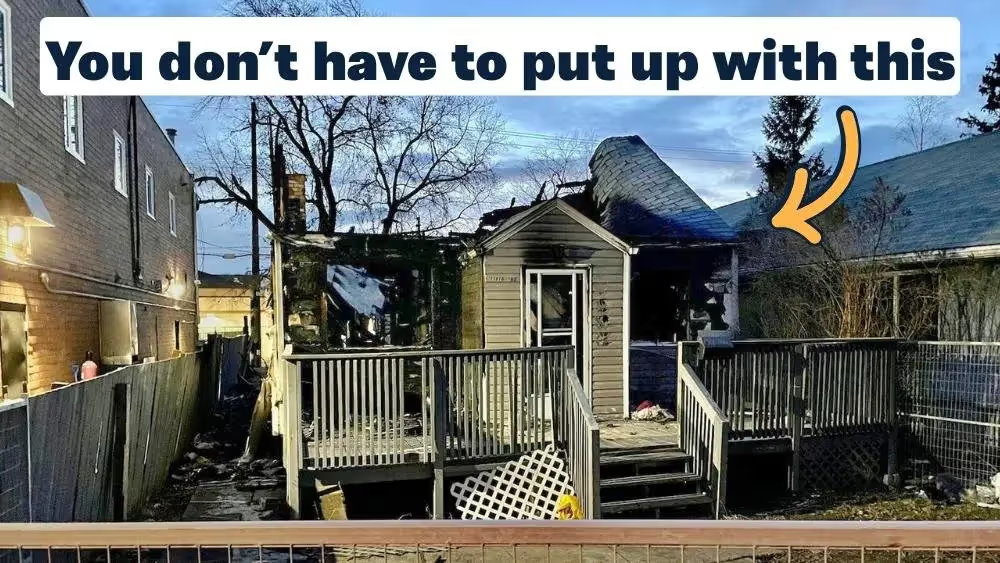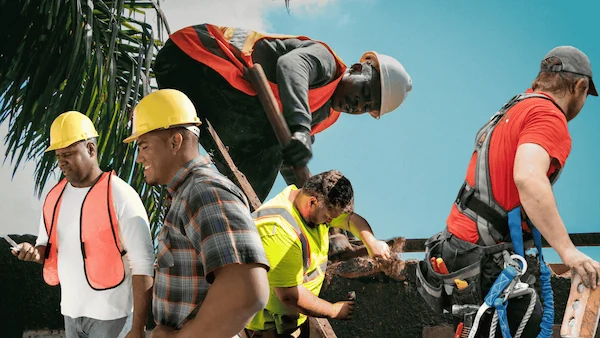Editor's Note: The challenges our cities face are growing, but so is the strength of this movement. Every story we share, every idea we spread, and every tool we build exists because people like you are committed to showing up. Your membership isn’t passive—it’s the momentum that makes change possible.
For years, many cities assumed they had very little real power to confront derelict properties. They believed absentee owners could simply wait out the community, letting buildings decay while public investment quietly boosted land values. The pain of derelict properties was felt deeply by neighborhoods through fires, crime, squatting, and disorder. Meanwhile, absentee landowners captured the gains, watching as their lots appreciated thanks to the hard work and public investment of the very communities they neglected.
Between 2020 and 2021, central Edmonton, Alberta, saw 429 fire-related incidents, many tied directly to derelict structures. Police, fire services, and bylaw officers were dispatched again and again. Residents lost sleep and felt powerless.
Use the Fire Code to Make Owners Take Responsibility
In her first run for local office, Councillor Ashley Salvador did not campaign on this issue. But after talking with residents in Ward Métis, she recognized the urgency. Within months of taking office, Salvador helped create the Community Property Safety Team, which worked closely with city staff to hold negligent owners accountable and secure dangerous structures at their expense.
A key tool was the city’s fire inspection authority. Under provincial law, Edmonton Fire Rescue Services can inspect unsafe buildings, assess damage, and order remediation. This was more than a procedural step—it gave the city real leverage to push owners into compliance and recoup costs directly.
When I reference this policy step in housing talks and public presentations, civic leaders lean in. There is consistent curiosity, even excitement. For many, this approach feels like something new and credible, a tool they hadn’t considered but immediately see as practical.
Edmonton didn’t invent this tactic from scratch. When I worked in the mayor’s office in the city of Surrey, British Columbia, the city grappled with firetrap grow-op houses (houses where people illegally grew marijuana). These houses were often heavily modified and drawing stolen power. Under Fire Chief Len Garis, Surrey pioneered the use of fire safety regulations to trigger inspections on suspicious properties. Those inspections, often accompanied by police for safety, frequently uncovered dangerous conditions and illegal activity. That program survived legal challenges and became a model that other cities studied.
Edmonton specifically referenced Surrey’s approach when developing its own policy, adapting the principle of using fire safety regulations not just to protect firefighters and neighbors, but to force negligent owners to take responsibility.
Use a Derelict Residential Tax Subclass to Encourage Action
In 2024, Edmonton took the groundbreaking step of implementing Canada’s first Derelict Residential Tax Subclass.
Under this policy, designated derelict properties pay triple the normal residential tax rate. These properties are not simply homes with peeling paint or overgrown grass; they are often abandoned, partially demolished, or boarded up, posing real safety risks to neighbors and first responders.
Owners who take action to remediate their properties can qualify for prorated rebates, effectively reducing the increased tax burden for any remaining months in the year once they bring their property back to a safe, livable condition.
If owners do not comply with an order issued by an Edmonton Fire Prevention Officer, the work will be carried out on the behalf of the owner with all costs charged to the owner's tax roll. Securement requirements can include robust board-up procedures, fencing, and up to 24/7 security patrols ordered through an escalating model of enforcement. — City of Edmonton
This creates a powerful incentive structure: Clean up the property and reduce your tax bill, or continue neglecting it and pay significantly more. The policy shifts the costs of enforcement and neighborhood degradation back onto negligent property owners, rather than leaving taxpayers to shoulder the burden.
Early results showed that dozens of properties were demolished, sold, or restored within the first year of the policy’s implementation, confirming that the financial incentive is changing owner behavior and improving community safety.
Between April 2022 and December 2024, CPST inspected 927 properties that were known or suspected to be unsecured and vacant. The team issued 437 enforcement orders and secured 376 properties. 311 (33%) of the inspected properties were subsequently demolished by their owners. In 2023, Edmonton Fire Rescue Services reported that CPST's work contributed to an estimated 31% decrease in structure fires in vulnerable neighbourhoods. — Problem Property Initiative, City of Edmonton
Early Results
- 54 buildings demolished
- 48 properties sold
- 8 properties remediated to livable condition
- $575,000 in new taxes collected
- Only 140 derelict properties remained after one year
Embracing a New Approach to an Old Problem
I’ve shared this story with city leaders across the country, and every time there is a spark of recognition: This is a policy that makes sense.
Credit belongs to Salvador and her council colleagues, but also to the city staff across Fire Rescue Services, Housing, Bylaw Enforcement, Finance, Taxation and Assessment, and Planning who built and implemented the framework.
Encouraged by early progress, Salvador helped advance motions to expand the subclass citywide, explore similar approaches for derelict commercial properties, and address speculative vacant landholding.
Of course, not every jurisdiction can adopt this tool exactly as Edmonton has. In some states and provinces, laws around equal treatment of properties limit local governments’ ability to create tax subclasses. But it’s worth questioning how that principle is applied. We already distinguish between commercial, industrial, nonprofit, and residential tax rates. Perhaps it’s time to recognize the unique public costs imposed by derelict properties and treat them accordingly.
For cities willing to think creatively and pair strong policy with rigorous enforcement, Edmonton offers a model worth exploring.
Edmonton’s approach proves that communities don’t have to accept neglect as inevitable. With creativity, courage, and the right tools, cities can reclaim safety, dignity, and opportunity—turning derelict properties from liabilities into catalysts for neighborhood renewal.
Public investment should build safer, healthier neighborhoods, not subsidize private neglect. That’s what Edmonton has done, and what others can do with vision, courage, and the right mix of practical tools.





.webp)